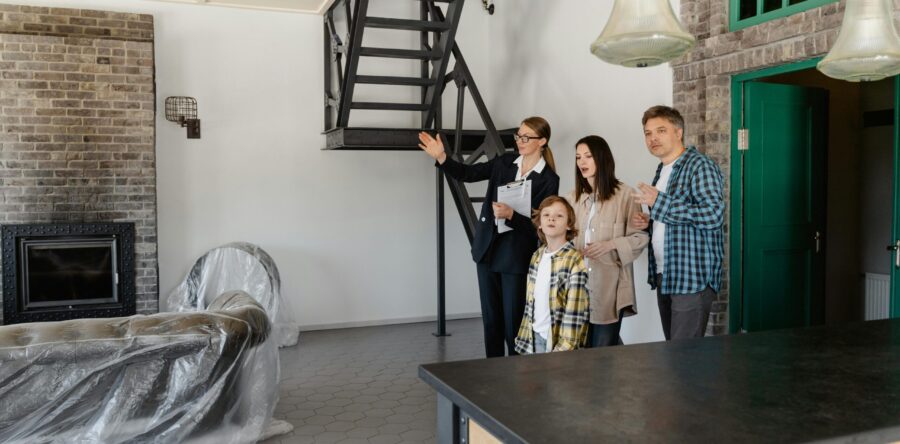If you’re gearing up to sell your house this spring, one of the first and most crucial discussions with your real estate agent will likely revolve around how accessible you want to make your home to potential buyers. While it may seem like a minor detail, the level of access you provide can impact the success of your sale. It is a must to offer ample opportunities for prospective buyers to tour your property, especially during the spring, the peak homebuying season.
Springtime is synonymous with increased buyer interest, and for good reason. The combination of nicer weather, the end of the school year, and the general desire to move during summer all contribute to heightened activity in the real estate market. With more buyers actively searching, they’re eager to view homes as soon as they find a listing that catches their eye.
If your home is easy to tour and fits their schedule, you dramatically increase the likelihood of receiving multiple offers, potentially driving up the final sale price. On the other hand, limited access can cause your property to be overlooked, especially if competing homes are more accessible.
The Impact of Buyer Access on Sale Success
When buyers know they’re competing with others, they’re more likely to put forth their best offer quickly. This sense of urgency is critical in a competitive market where homes can receive multiple offers within days of listing. However, if your home isn’t readily available for showings, you may miss out on these motivated buyers.
While it’s natural to want to minimize disruptions to your routine—especially when it involves keeping your home in pristine condition—the payoff for accommodating potential buyers can be significant. As Investopedia wisely notes, accommodating potential buyers, even when inconvenient, is essential to achieving your goal of a successful sale.
Moreover, the more accessible your home is, the broader the pool of potential buyers you can attract. Some buyers may have limited availability, such as evenings and weekends, and if your home isn’t available during those times, you could miss out on serious offers. Remember, each showing is an opportunity to make an impression, and the more impressions you make, the higher the chances of selling your home quickly and at a favorable price.
Options for Making Your Home Accessible
Your real estate agent will help you weigh the different levels of access you’re comfortable with, balancing your needs with market demands. The options range from the most convenient for buyers—such as using a lockbox that allows agents to show the home at almost any time—to more restrictive approaches, like requiring appointments. Each level of access comes with its own set of pros and cons.
For example, a lockbox on the door allows agents to access your home without needing to coordinate schedules, making it the most flexible option for buyers. This convenience can lead to more showings and, consequently, more offers. But, some sellers may feel uncomfortable with this level of access, preferring to be more involved in the process.
Alternatively, you could provide a key to your agent, which requires them to stop by the office to pick it up before showing the home. While still relatively convenient, this option may slow down the process slightly, potentially missing out on spontaneous showings. The next level is open access with a phone call, where you allow a showing with just a call’s notice. This is a great option for accommodating buyers who may spot your home while driving by and want to see it immediately.
For those who prefer more control, "by appointment only" is a popular choice. On the one hand, this option gives you an advanced warning so you can tidy up the house and ensure you’re not home during the showing. On the other, this approach is more restrictive and could result in fewer showings if buyers can’t accommodate the available times.
Finally, limited access—where you only allow showings on specific days or times—offers the least flexibility and is likely to reduce buyer interest, especially in a competitive market.
How Technology Can Enhance Accessibility
In today’s digital age, there are more ways than ever to make your home accessible to buyers, even if in-person showings are challenging. Virtual tours and video walkthroughs have become increasingly popular, especially with the rise of remote home buying. These tools allow potential buyers to explore your home from the comfort of their own, providing a realistic sense of the space without needing to step inside. This can be particularly useful for out-of-town buyers or those with tight schedules.
Virtual tours offer the advantage of being available 24/7, meaning buyers can view your home at any time, increasing the chances of attracting interest. Your real estate agent can help you create a professional virtual tour highlighting your home’s best features, ensuring it stands out in online listings.
The Role of Staging in Maximizing Access
Another factor in making your home appealing and accessible is staging. Proper staging can enhance how your home is perceived during showings, both in person and virtually. Staging involves arranging furniture, décor, and other elements in a way that showcases your home’s strengths and makes it easier for buyers to envision themselves living there.
Staging can help you keep your home looking its best throughout the selling process. When your home is staged, it’s easier to maintain a clean and tidy appearance because everything has a place, and the focus is on highlighting the property rather than your personal belongings. This can reduce the stress of keeping your home "show-ready" at all times.
Your real estate agent can guide you through the staging process, whether that means bringing in professional stagers or simply offering tips on how to arrange your existing furniture and décor. The goal is to create a welcoming environment that appeals to the widest range of buyers.

How to Balance Access with Your Schedule
While maximizing access is essential, it’s equally important to find a balance that works with your personal schedule and comfort level. Selling a home can be a disruptive process, but there are ways to minimize the impact on your daily life. One approach is to schedule showings during times when you’re naturally out of the house, such as during work hours or when you’re running errands.
You can also set specific blocks of time when your home is available for showings, allowing you to plan your day accordingly. Communicate these preferences with your real estate agent, who can help manage the scheduling and ensure that buyers are aware of the available times. This way, you can maintain some control over the process while still making your home accessible to potential buyers.
The Risks of Limiting Access
Sellers should recognize that limiting access to your home can have a direct impact on the success of your sale. The more restrictive you are with showings, the fewer buyers will have the opportunity to view your home. In a competitive market, this can lead to your property being overlooked, especially if there are similar homes that are more accessible.
Buyers often have limited time to make decisions, especially if they’re relocating or have already sold their previous home. If they can’t see your home when it’s convenient, they may move on to other options. This is why working with a real estate agent to find a balance between accessibility and convenience is paramount.



Bruce
Marcus
Emma